With so many types of flooring available, you will likely find more than one type of flooring from room to room of a house. Wood floors have become hugely popular for their clean and modern yet warm and inviting look. But how do you know how to go about transitioning from wood floors to carpet? We have searched multiple sources to bring you a selection of ways to transition from wood floors to carpet.
Flooring transitions are as varied as the flooring itself, each addressing specific flooring needs on either side of the transition. The needs of each type of flooring will need to be met by different parts of transition pieces or using different techniques. The following are flooring transition options that are available for transitioning from wood floors to carpet:
Without transition strips:
- Flooring of different heights
- Flooring of the same height
With transition strips:
- T-bar transition strip
- Flexible T molding
- Seam binder
- Reducer transition strip
- Self-adhesive threshold strip
- 4-in-1 transition strip
Deciding on one particular option of transitioning between wood floors to carpet is likely only the beginning of decisions that will need to be made during your flooring project. You may wonder whether transition strips are necessary, how to use them, and how to install them. You may have questions about the cost of carpet removal and hardwood installation. We will address all of these questions and discuss other related topics in this post. Just keep reading!
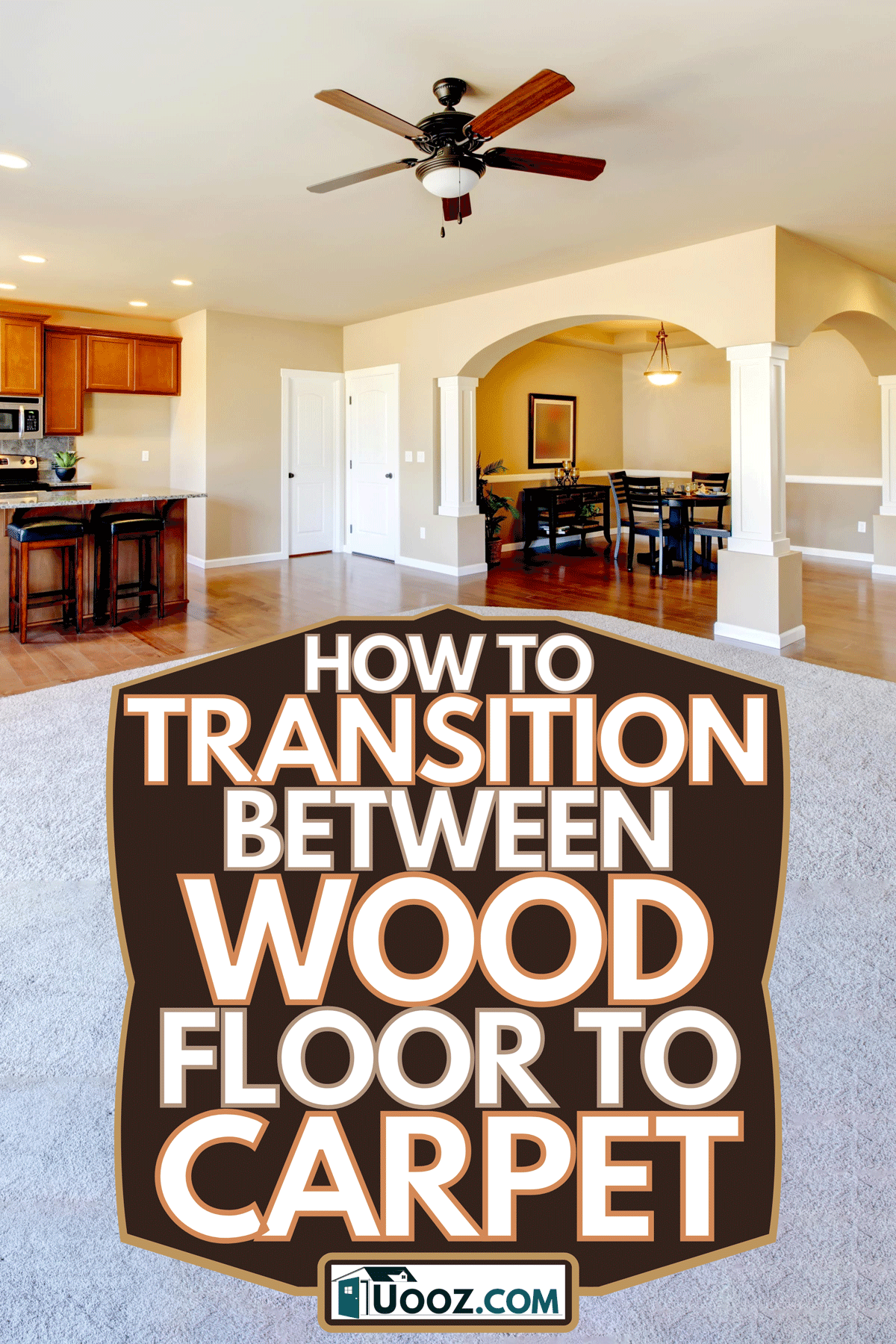
Without transition strips
You may be able to transition from wood flooring to carpet without the use of transition pieces if a few conditions are right. The hardwood floor and carpet must be of equal height to seamlessly transition from one to another without being a safety hazard.
The types of flooring should also mesh well with each other to be aesthetically pleasing. We will further discuss some of the options to transition from wood floors to carpet without transition strips.
Flooring of different heights
To transition from wood floors to carpet if the two floors are uneven, one technique that can work is folding the last inch or so of the carpet underneath itself and nailing it down. If the edge of the carpet is exposed, it can be subject to fraying, so this method will also address that issue.
This technique works best if the carpet is thin and the wood flooring is slightly higher than the carpet. A tack strip, such as the one pictured below, should be used under the rolled portion of the carpet to keep it in place.
Click here to find this product on Amazon.
Flooring of the same height
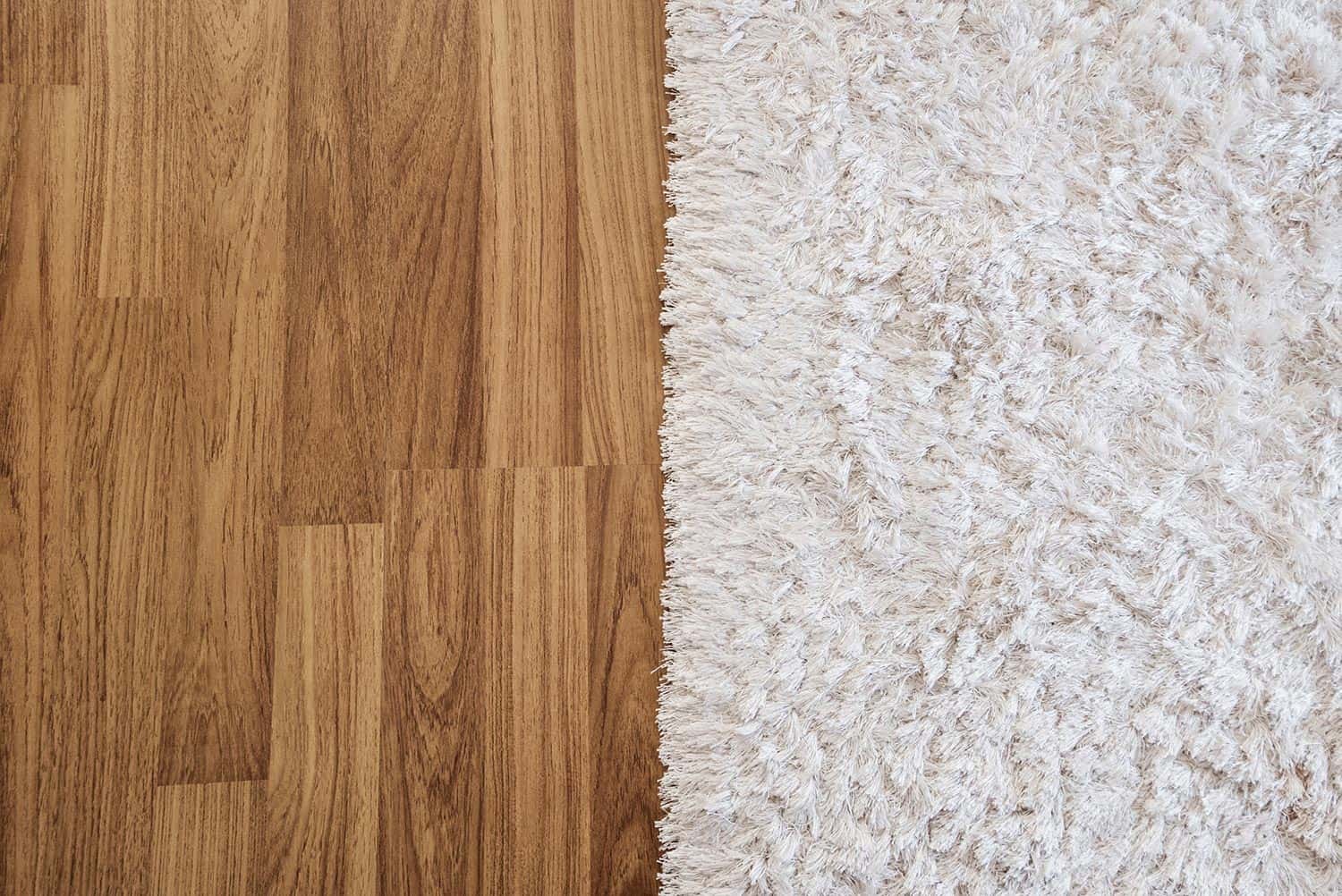
If your carpet and hardwood flooring sit at equal heights, the rolling method discussed above may not be your best option. Carpet can be lined up with the edge of your hardwood floors and cut with the sharp blade of a utility knife for preciseness.
You will still need to use a tack strip with this method to hold the edge of the carpet in place. About a 1/4-inch gap should be left between the tack strip and the hardwood when using this method.
With transition strips
Typically, if you are transitioning from wood to carpet floors, there will be a change in height. Transition strips can help make this transition smoother.
Transition strips are also useful to clearly mark the ending of one type of flooring and the beginning of another. This differentiation is more important than you may think when walking about your home.
T-bar transition strip
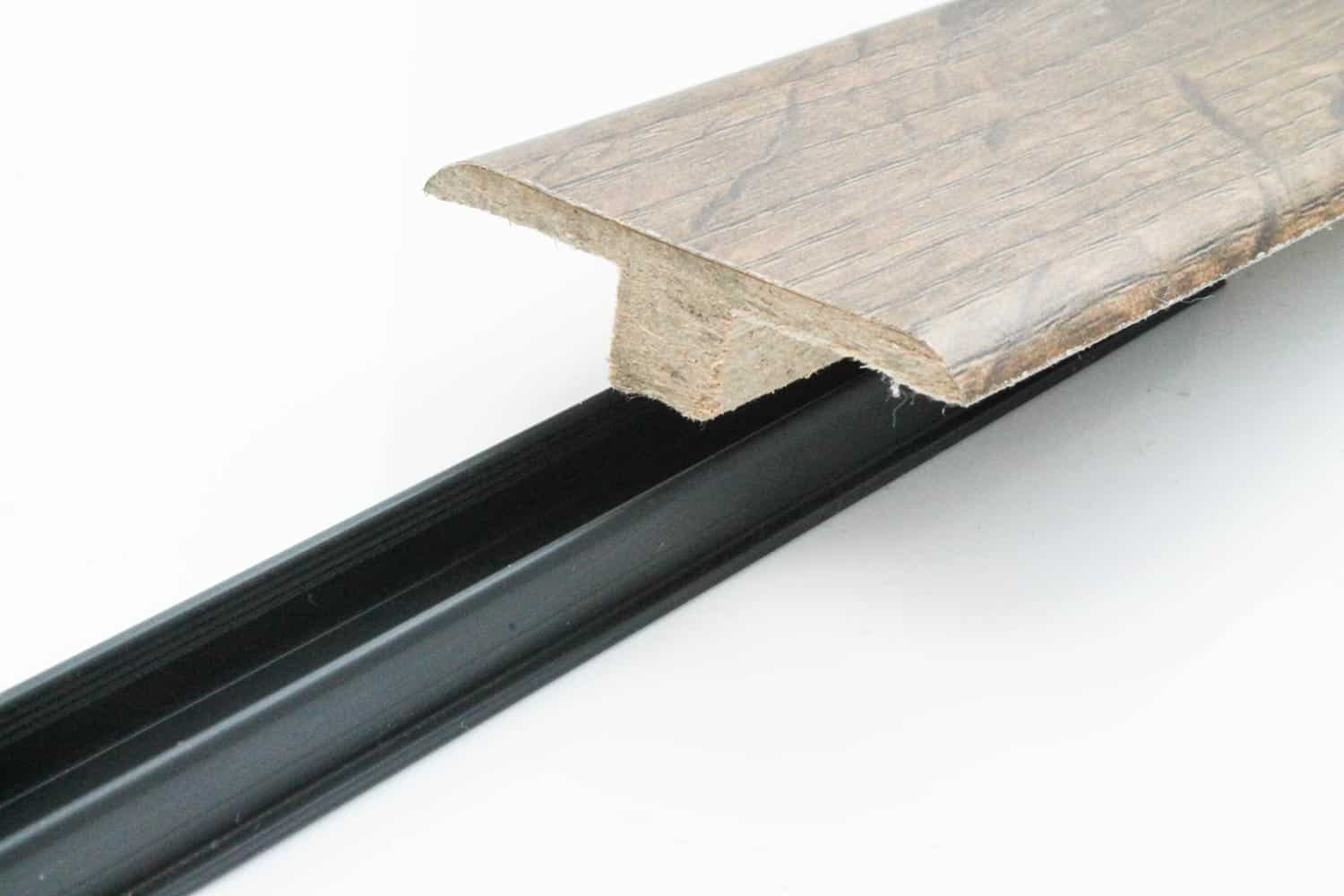
If you find yourself with a wood floor that is the same height as carpet, a T-bar transition strip may be the transition strip for you. The T-bar transition strip is named for its letter T-shape.
T-bar transition strips can be made of several different materials including but not limited to wood, metal, and vinyl. Many T-bar transition strips such as the transition strip pictured below can be finished to match your wood flooring.
Click here to find this product on Amazon.
Flexible T-molding
For curved-edged carpet/wood floor transitions, flexible T-molding can help make your project a huge success. Bending and curving come easy with this flexible transition piece.
Because of its T-bar design, this flexible transition is stable and durable while still being easy to install and maintain. Curved room transitions are a creative way to create an eye-catching look using flooring.
Click here to find this product on Amazon.
Seam binder
For those looking for a simple transition piece, the seam binder transition piece may be just what you are looking for. Seam binders are typically made of wood with predrilled holes to screw into the ground between a flooring transition.
Seam binders are made to fit loosely over floorings of equal heights, making them perfect for wood flooring transitions that expand over time. The seam binder pictured below is unfinished and can be painted or stained to match any flooring.
Click here to find this product on Amazon.
Reducer transition strip
Reducer transition strips are made for floors of different heights, making them perfect for wood floor to carpet transitions. The reducer transition strip reduces the drastic change in height from one type of flooring to another.
A carpet edge gripper can sometimes be found with this type of transition strip. A snap-in strip is included for easy installation and lots of support.
Click here to find this product on Amazon.
Self-adhesive threshold strip
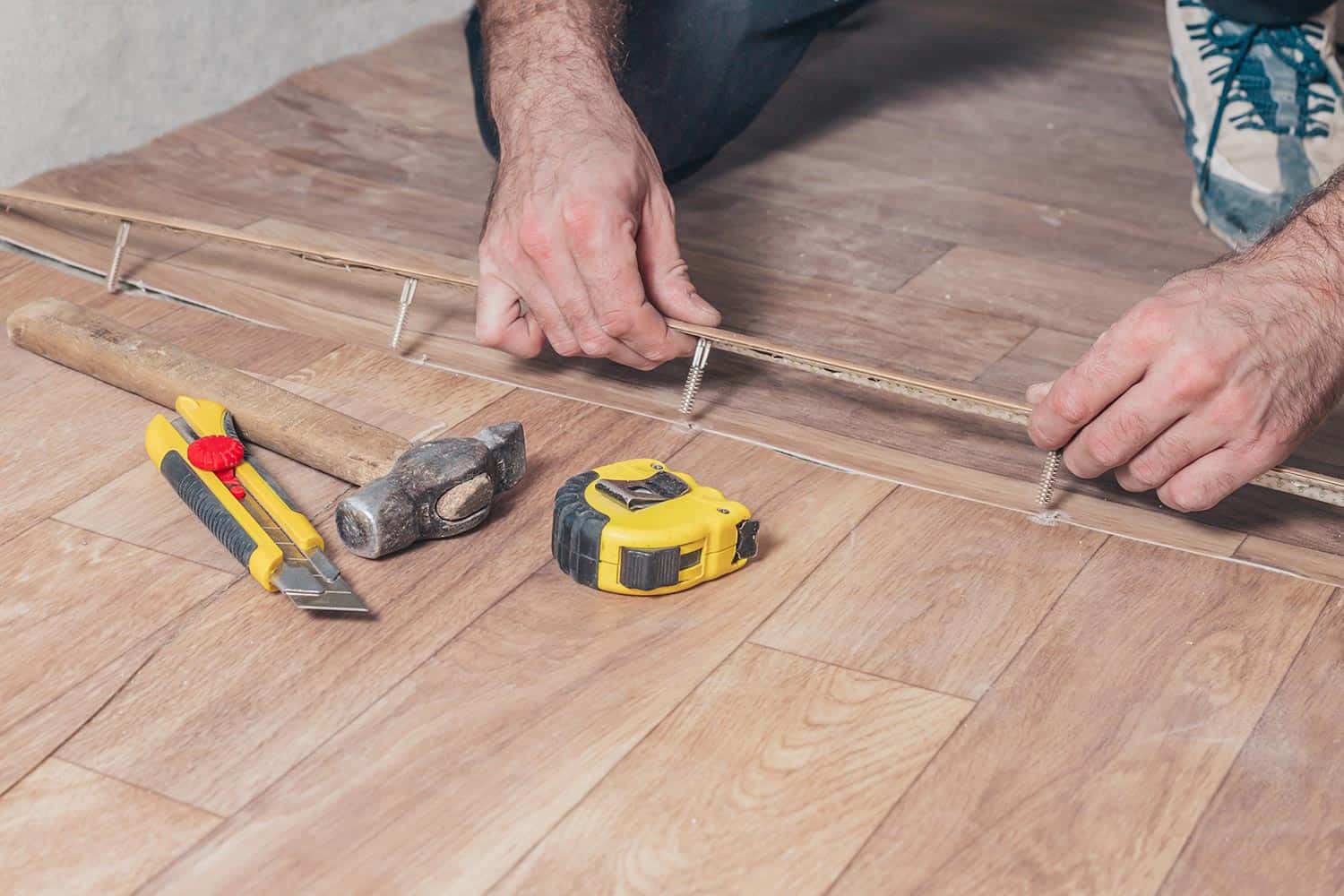
This peel-and-stick version of a transition strip is designed for easy application to your wood floor to carpet transition. This flexible option in transition pieces makes it easily adaptable to almost any situation.
The peel and stick transition strip pictured below is durable and easy to clean and maintain. One disadvantage to this transition piece is that the height difference must be 3mm or less.
Click here to find this product on Amazon.
4-in-1 transition strip
As the name implies, 4-in-1 transition strips can function in 4 different ways depending on the flooring material. Because there are different options to choose from, the fit of your carpet transition is sure to be better.
The 4 transition moldings that can be assembled using the 4-in-1 transition molding include a hard surface reducer, T-molding, end molding, and carpet transition molding.
Are transition strips necessary?
Transitions between two different types of flooring will result in different heights depending on the flooring. Transition strips are useful to alleviate the height difference, making the transition safer and more attractive.
Some carpets are also thicker than others, creating a height difference that is a potential safety and tripping hazard. Differentiating the transition between different flooring using transition strips helps you to anticipate the change and decreases the chances of potential tripping hazards.
How do you use transition strips for carpet?
Transition strips should cover the transition from one flooring type to another and ensure that the transition is smooth and even. The type of transition strip that you should use is dependent on flooring heights.
A different transition strip will be used for floors that are even in height versus those of different heights. Carpet transition strips vary widely from aluminum strips that are nailed down to wooden strips with a metal track or carpet grippers.
How do you install transition strips on the floor?
Transition strips vary widely, but most are designed to sit directly over the flooring transition. There are sometimes holes along the transition strip that should be carefully placed over the carpet side of the joint so that nails or screws aren't going into the hardwood.
Some transition strips come with tracks that are secured to the floor or carpet grippers that hold the edge of the carpet in place. Because transition strips vary widely, be sure to verify that you have the right type for your specific flooring combination.
How much does it cost to remove carpet and install hardwood floors?
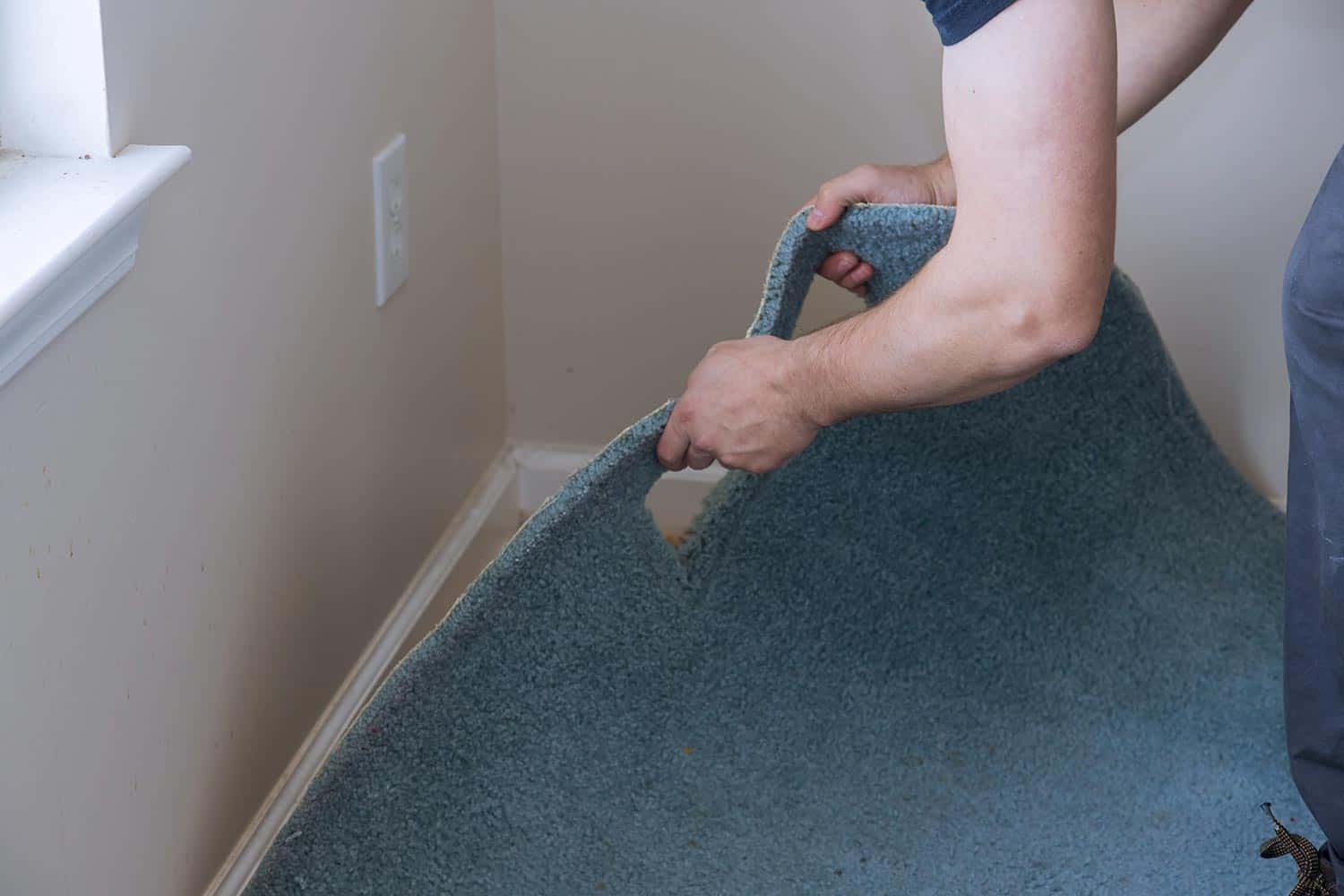
Flooring removal and installation are often measured by the square footage of the project. Labor costs can range from about $4-$9 per square foot.
The cost of flooring materials can range from $3-$14 per square foot depending on the hardwood that you choose. The average price to remove carpet and install hardwood for 100 square feet ranges from about $600-$1,200.
Final thoughts
Flooring choices typically differ from room to room of many homes. Carpet is a popular choice for comfort but is not practical in many spaces, making transitions to other flooring materials necessary.
While choosing the right transition for your space may seem daunting, it doesn't have to be. We hope that the above selection of transitions from wood floor to carpet has helped you make the right choice in flooring transitions.
Before you go, here are some other articles that may be of help to you:
How To Transition Carpet To Tile [Even Without Transition Strips]






